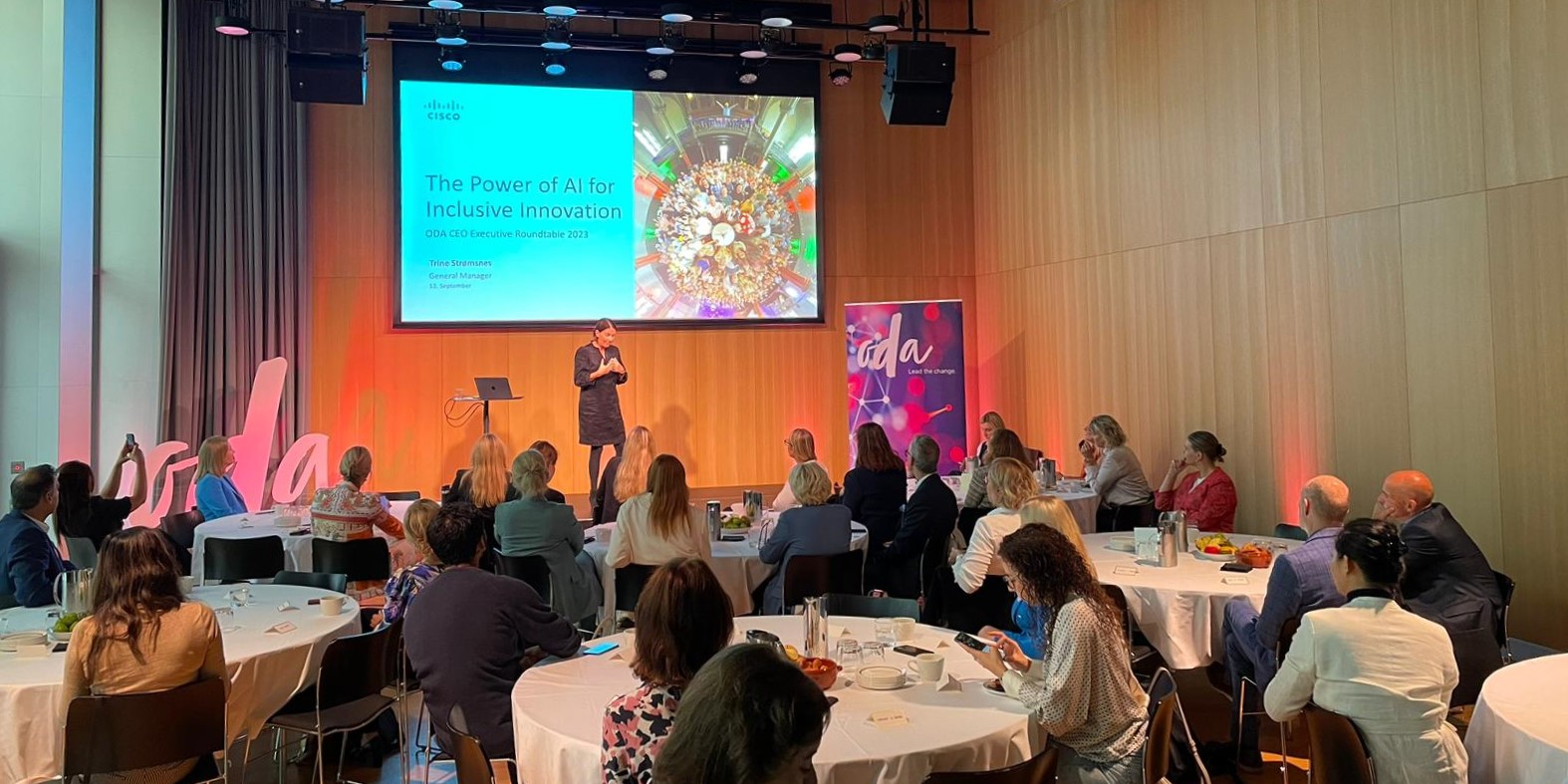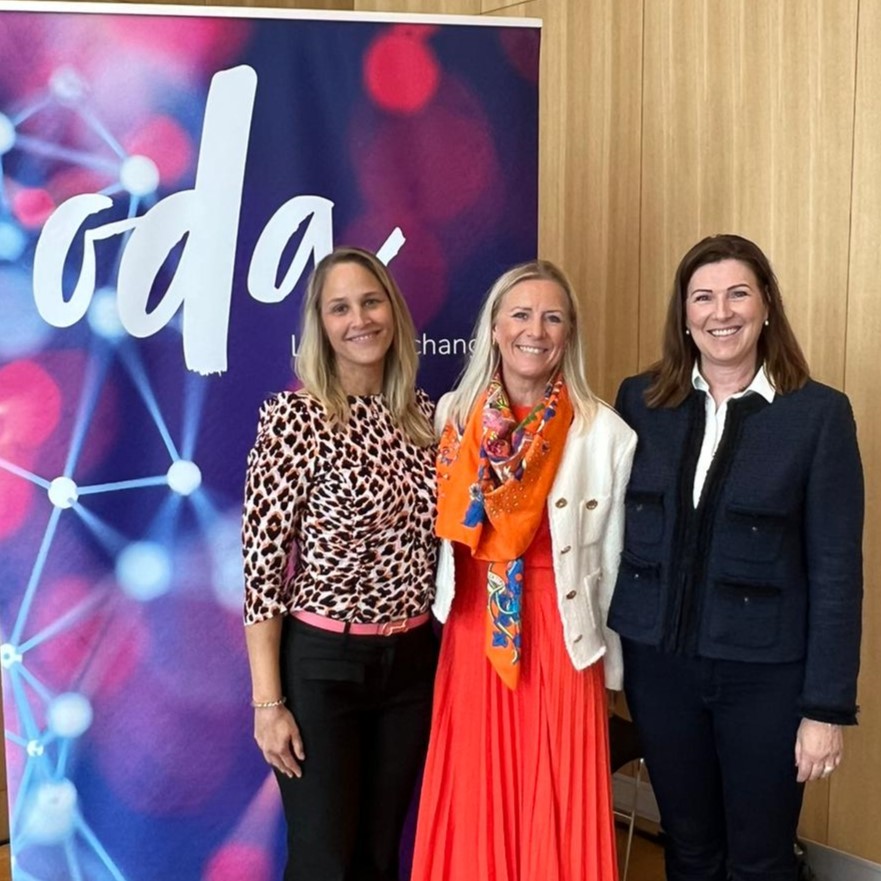
In mid-September, the ODA network hosted the CEO Executive Roundtable for more than 50 CEOs from the tech industry to discuss one of the hot topics in the digital world: Artificial Intelligence (AI). More specifically, the leaders gathered to share insights on how AI can drive inclusive innovation.
How organizations use AI today
Surprisingly, according to a report provided by Abelia, only 15% of companies in Norway actively use AI in their daily work. But what is AI even? With the topic of generative AI, an AI that can generate new content such as images, video, text, music, speech, product designs and software code that appears to be human-made, based on natural language queries (Gartner), many forget that AI has been around for a long time, supporting businesses with chatbots, spam filters, proof-reading, translating, content curation and recommendations, or predictive search algorithms, to just name a few examples that people might not recognize as AI right away. Meaning the actual percentage of businesses using AI is likely a lot higher.
Directing Risks and Benefits of AI
For organizations, that means it's high time to implement guidelines on the usage of AI on the job. One of the prime directives should be mindfulness in what data you feed your tools with. The technologies often collect vast amounts of information, potentially causing data security and privacy issues. To mitigate these risks, strict digital security regulations need to be implemented, and people should be trained in secure information handling.
A second essential responsibility is critical thinking when interpreting output. A lack of transparency in the data an AI has been trained with or in how it comes to a conclusion can pose pressing risks, especially in decision-making processes, and can lead to severely biased results.
AI for Inclusive Innovation
Investing in diversity for AI training data among the people in an organization will not only reduce discrimination but also lead to new perspectives and inclusive innovation. So it did, for example, in the case of Microsoft software engineer Swetha Machanavajhala, deaf since birth, who essentially built the background-blurring feature for Microsoft Teams and Skype to be able to read conversation partner’s lips better, which is now one of the most used AI-powered features on these platforms.

— AI can be a powerful tool for driving inclusion and innovation – when used in a responsible manner. It is a tightrope walk between using AI to pioneer technology and protecting sensitive data or invading privacy. But when following our self-imposed rules of diversity and Information security, and with human minds at the core, AI can support us in creating value for our users.
— CEO roundtable is one of the important initiatives of ODA Nettverk, a network for women in IT started in 2006, when a group of women from Microsoft and the IT industry arranged the first Inspirational Day at Microsoft. Since then, the network has grown tremendously and now has more than 10,000 members. ODA organizes initiatives like network meetings, mentor programs, inspirational days, and executive initiatives in order to increase diversity on all levels of the IT industry.

ODA network is run entirely on a voluntary basis and has more than 50 volunteers from the IT industry. More than 60 industry organizations are partners of the network. See a list of partners and read more about ODA network on their website.
Picture to the left: The current leader of ODA network, Kine Dahl (pictured in the middle) with Anne Gretland (right) and Kristine Hofer Næss (left), co-founders and former leaders of ODA network.
Want to learn more?
Talk to one of our experts to discover how we can streamline your organization's content workflows.


